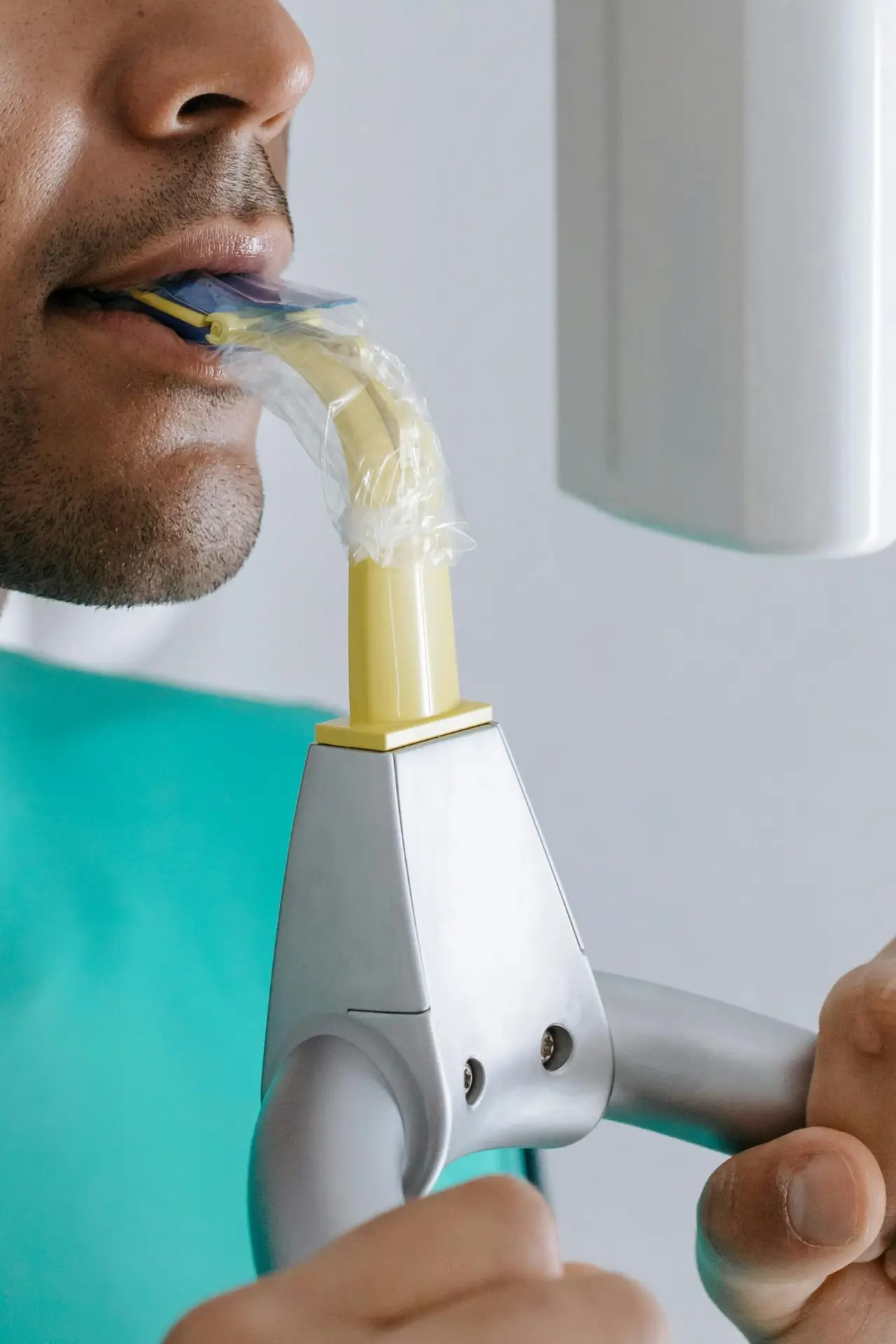
TMJ Treatment Sarasota: Living with jaw pain is exhausting. You plan meals around what you can chew. You avoid wide yawns and long conversations. You wake up with headaches, neck tightness, and that dull, relentless ache near your ear. If you’re in Sarasota or Manatee County and searching for a natural, drug-free, surgery-free solution for TMJ (temporomandibular joint) problems, you’re in the right place. At Lavender Family Chiropractic, our upper cervical chiropractic approach focuses on the real foundation of your jaw function—your head-neck alignment and the nerves that coordinate the jaw, face, and neck.
This in-depth guide explains what TMJ/TMD really is, why the upper neck is often the missing piece, how our state-of-the-art technology (3D CBCT imaging and functional nervous system scans) helps us find the root cause, and what a gentle, precise care plan looks like—without popping, twisting, or cracking. We’ll also share home-care strategies, common mistakes to avoid, and top FAQs so you can make a confident decision about your health.
If you’re looking for a “chiropractor near me” in Sarasota, Lakewood Ranch, or Bradenton who truly understands TMJ, we’re here to help—encouraging, thorough, and relentlessly focused on getting you back to the life you love.
TMJ Treatment Sarasota: What Is TMJ (TMD)? Understanding the Condition Behind the Name
“TMJ” refers to the temporomandibular joint—where your jaw (mandible) meets your skull (temporal bone). When people say “I have TMJ,” they usually mean TMD (temporomandibular disorder): pain, stiffness, popping, clicking, locking, or difficulty with chewing or opening. You might also notice ear fullness, tinnitus, facial pain, headaches, or pain that radiates into the neck and shoulders.
Common signs and symptoms of TMD include:
- Jaw pain in front of one or both ears
- Clicking, popping, grinding (crepitus) with opening or chewing
- Locking open or closed, or limited opening (“stuck” feeling)
- Morning headaches, teeth clenching, or grinding (bruxism)
- Ear fullness, ringing, or pressure with no ear infection
- Neck stiffness, upper back tension, and facial muscle fatigue
TMD is multifactorial. Bite mechanics, stress, tongue posture, airway issues, previous trauma (such as whiplash), connective tissue health, and—critically—upper neck alignment can all influence symptoms. While splints or medications may temporarily reduce pain, many patients want a comprehensive, root-cause plan that doesn’t depend on drugs or invasive procedures. That’s where upper cervical chiropractic enters the picture.
Why Jaw Pain Often Isn’t “Just a Jaw Problem”
Your jaw doesn’t operate in isolation. It is wired into a powerful network of muscles and nerves coordinated by the brainstem and upper cervical spine. The trigeminal nerve (cranial nerve V) carries sensation from the face and controls major chewing muscles. Its sensory nucleus blends with the upper cervical nerve system (especially C1/C2) in a region often called the trigeminocervical complex. In practical terms: what happens at the top of your neck can alter how your jaw feels and functions.
Three key connections to understand:
- Atlas/Axis Alignment (C1/C2):
The atlas (C1) and axis (C2) are designed for precision movement. Even a subtle misalignment here can shift head posture, change muscle tone in the jaw and neck, and disturb balance in the nervous system. You may feel this as jaw clenching, uneven chewing, or that one-sided “dominant” bite that never seems to relax. - Posture and Muscle Chains:
Forward head posture strains suboccipital and jaw muscles simultaneously. Tightness behind the skull can drive trigger points in the masseter, temporalis, and pterygoids. Correct the head-neck posture and you often see jaw tension melt, chewing symmetry improve, and clicking reduce. - Nervous System Control:
The brainstem coordinates automatic functions, pain processing, and muscle tone. When the upper cervical region is misaligned, the nervous system may become hyper-protective, increasing jaw guarding and sensitivity. Restoring normal alignment can calm overactive input and improve how the jaw moves.
This is why addressing only the bite or only the jaw muscles sometimes falls short. If the upper cervical spine remains unbalanced, the jaw keeps compensating—and you keep chasing symptoms.
Upper Cervical Chiropractic 101: Gentle, Precise, and Powerful
Upper cervical chiropractic is a highly specialized branch of chiropractic that focuses on the top of the spine—especially C1 (atlas) and C2 (axis). Rather than forceful, high-velocity twisting, we use a gentle, precise correction tailored to your unique anatomy. At Lavender Family Chiropractic, our goal is simple: restore balance to the head-neck junction so the nervous system can coordinate jaw function as it was designed to do.
What makes our approach different?
- No popping, twisting, or cracking: Our corrections are controlled and specific. Patients often describe them as surprisingly light—yet profoundly relieving.
- Data-driven care: We guide every decision with advanced imaging and functional nervous system scans.
- Respect for your body’s timing: We correct only when necessary. Stability matters more than “more adjustments.”
- Whole-person plan: TMJ relief is the beginning; long-term stability is the goal. We incorporate posture, airway awareness, sleep ergonomics, and stress strategies.
For many of our patients searching for an “upper cervical chiropractor near me” in Sarasota and Manatee County, this gentle, careful approach is the turning point—especially when other methods have plateaued.
Our Technology: 3D CBCT Imaging & Functional Nervous System Scans
Precision begins with clarity. To see what’s really happening in your upper neck and jaw joints, we use 3D CBCT (cone-beam computed tomography) when clinically indicated. CBCT allows us to visualize joint spaces, bone structure, atlas orientation, and potential asymmetries with remarkable detail. This is especially helpful for complex TMJ cases where standard X-rays may miss critical nuances.
We also use functional nervous system scans—including paraspinal infrared thermography (Tytron)—to assess autonomic patterns along the spine. These scans help us understand how your nervous system is adapting (or struggling) day to day. When combined with posture assessments, range-of-motion testing, and orthopedic/neurological exams, the result is a crisp, three-dimensional picture of your head-neck-jaw system.
Why this matters for TMJ:
- Detects structural contributors to jaw asymmetry
- Clarifies whether C1/C2 misalignment is perpetuating jaw muscle tension
- Guides the exact angle and depth of your correction
- Tracks progress objectively, so we adjust less and stabilize more
The Lavender Difference: Gentle, Precise Corrections Without Drugs or Surgery
At Lavender Family Chiropractic, we don’t mask symptoms—we pursue the cause. Our upper cervical corrections are customized to your anatomy and delivered with a light, controlled force. Many patients are surprised that such a subtle input can create a big change, but when the correction is exact, your nervous system often “lets go” of protective muscle patterns quickly.
What you won’t get:
- Forceful neck twisting or popping
- A one-size-fits-all routine
- Endless adjustments without a plan for stabilization
What you will get:
- Thoughtful, measured corrections only when indicated
- Care plans that prioritize healing and long-term stability
- Clear explanations and collaborative, compassionate support
Our team—Dr. Rusty Lavender, Dr. Jacob Temple, and Dr. Will Guzinski—is deeply committed to helping patients in Sarasota, Lakewood Ranch, Bradenton, Parrish, and the surrounding communities experience life-changing, drug-free TMJ relief.
Your First Visit: What to Expect Step-by-Step
1) Consultation & Case Review
We listen. You’ll share your story—onset, injuries, dental work, clenching, stress, sleep, past care, and goals. We connect the dots between jaw symptoms and upper neck patterns.
2) Functional Exam
We perform orthopedic, neurological, and TMJ-specific tests, posture analysis, and motion assessments. If clinically indicated, we’ll recommend 3D CBCT imaging for high-resolution views of your upper cervical spine and jaw joints.
3) Functional Nervous System Scans (Tytron)
Non-invasive thermography detects asymmetries along your spine that reflect autonomic imbalance. This helps us decide if and when a correction is needed.
4) Personalized Report of Findings
We’ll explain what we found and show you what’s driving your TMJ symptoms—from atlas orientation to jaw mechanics. You’ll receive a tailored plan that includes gentle corrections and specific home care.
5) First Upper Cervical Correction (If Indicated)
Your correction is gentle and precise—no twisting, popping, or cracking. After a short rest period to let your body adapt, we re-scan and reassess.
6) Stabilization & Progress Checks
Early visits focus on establishing stability. As corrections “hold” longer, we space out appointments and emphasize at-home strategies to protect your progress.
How Upper Cervical Care Helps TMJ: A Clear Mechanism
Balance the Head on the Neck:
If your head sits slightly off center, jaw muscles must work overtime to keep chewing symmetrical. Correcting atlas alignment reduces that muscular tug-of-war.
Normalize Neurological Tone:
When upper cervical stress calms, the trigeminocervical system often quiets. Patients report less clenching, fewer headaches, and easier, smoother opening.
Improve Posture and Movement:
As your posture resets, suboccipital and jaw muscle trigger points resolve. Rotation and translation of the mandible become more coordinated, and clicking may soften or disappear.
Reduce Inflammation and Guarding:
Better alignment means better mechanics. Less friction and guarding often translates to less pain, especially with talking, yawning, or eating firmer foods.
Who’s a Good Candidate for Upper Cervical TMJ Care?
You may be an excellent candidate if you have:
- TMJ pain with neck tightness, headaches, or history of whiplash
- One-sided jaw dominance, ear fullness, or frequent facial tension
- “I’ve tried splints and massage, but it keeps coming back” frustration
- Postural strain from desk work, driving, or phone use
- A desire for drug-free, surgery-free care that targets root causes
We happily collaborate with dentists, oral surgeons, physical therapists, ENTs, and myofunctional therapists. If you’re using a night guard or going through orthodontic changes, upper cervical care can be a powerful stabilizer so the jaw adapts more evenly.
Home Care That Protects Your Results
Upper cervical corrections create an opportunity for healing. Your home routine sustains it.
Jaw & Neck Micro-Habits
- Tongue posture: Rest the tongue lightly on the palate (just behind the front teeth), lips closed, nasal breathing. This can reduce jaw strain.
- Chew even: Alternate sides with softer foods at first. Avoid aggressive gum chewing during early phases.
- Talk breaks: If you’re a heavy talker or on calls often, pause to relax your jaw, drop your shoulders, and breathe.
Sleep Ergonomics
- Pillow choice: Use a supportive pillow that keeps your head level and your neck neutral. Side or back sleeping is preferred; avoid stomach sleeping.
- Pre-sleep decompress: Light neck stretches, gentle nasal breathing. Quiet the jaw before bed to reduce clenching.
Workstation Setup
- Screen at eye level: Prevents forward head posture that tightens jaw and neck muscles.
- Chair and keyboard alignment: Keep elbows near 90°, wrists neutral, and shoulders relaxed.
- Movement snacks: Micro-breaks every 30–60 minutes release accumulated tension.
Stress & Breath
- Nasal breathing: Slows the stress response. Try a simple 4-second inhale, 6-second exhale pattern several times a day.
- Gentle mobility: Low-impact movement, walking, or light yoga keeps muscle tone balanced.
Food & Lifestyle
- Temporary soft diet (as needed): Reduce excessive chewing stress in early healing.
- Anti-inflammatory choices: Hydration, minerals (magnesium-rich foods), and balanced meals support tissue repair.
What Results Can You Expect—and When?
Every case is unique, but many TMJ patients notice early changes like less morning clenching, easier chewing, fewer headaches, and a calmer jaw. Clicking often softens or becomes less frequent as mechanics improve. Some relief can happen quickly; deeper stability builds over weeks as your correction “holds” longer and your home habits become second nature.
We monitor progress with re-scans, periodic re-evaluations, and simple outcome measures (chew comfort, opening range, headache frequency, sleep quality). Our mission is steady, meaningful progress—not a quick fix that fades.
Patient Stories (Composite Educational Examples)
“K’s Story—From Daily Clicking to Confident Chewing”
K, a professional who speaks for a living, had daily jaw clicking, right-sided headaches, and neck tightness. 3D CBCT revealed an atlas tilt and mild asymmetry. After her first gentle upper cervical correction, her clicking softened. Over several weeks, thermography patterns stabilized, posture improved, and her “chew fear” faded. She now enjoys normal meals and long conversations without worrying about her jaw.
“M’s Story—Bruxism, Ear Fullness, and the ‘Always Tight’ Neck”
M clenched at night and woke with ear fullness and jaw fatigue. He had tried splints and massage with only temporary relief. We found a C1 rotation with consistent thermographic stress. After precision corrections, his morning clenching diminished, the ear pressure faded, and neck range improved. His dentist noticed less wear over time, and M finally slept deeply again.
These stories are composites used for education to protect privacy and illustrate common outcomes when the root cause is addressed.
How We Collaborate with Dentists, PTs, and Other Providers
TMJ care is a team sport. We frequently coordinate with dental professionals on splints, bite changes, and airway-focused strategies. We work with physical therapists on targeted muscle rehab and with ENTs or myofunctional therapists when airway or tongue posture issues need attention. Our role is to stabilize the neurological “control center” at the top of the spine so every other therapy works more predictably.
Why Choose Lavender Family Chiropractic for TMJ in Sarasota & Manatee County
- Upper Cervical Expertise: We focus on the head-neck junction where jaw control begins.
- Advanced Diagnostics: 3D CBCT imaging and functional nervous system scans (Tytron) guide precise care.
- Gentle, Precise Corrections: No twisting, popping, or cracking—ever.
- Whole-Person Plan: We pair corrections with posture, breathwork, sleep, and workstation strategies.
- Local, Caring Team: Dr. Rusty Lavender, Dr. Jacob Temple, and Dr. Will Guzinski provide attentive, compassionate, results-oriented care.
- Convenient Location: 5899 Whitfield Ave Ste 107, Sarasota, FL 34243—serving Sarasota, Bradenton, Lakewood Ranch, Parrish, Ellenton, Venice, Osprey, Punta Gorda, St. Petersburg, Siesta Key, Longboat Key, Lido Key, and Myakka City.
If you’ve been searching for “chiropractor Sarasota Florida,” “upper cervical chiropractor near me,” or a natural “TMJ treatment Sarasota,” we would be honored to serve you.
Top 15 FAQs About TMJ and Upper Cervical Chiropractic
1) What’s the difference between TMJ and TMD?
TMJ is the joint; TMD is the disorder. Most people say “TMJ” to mean jaw problems—pain, clicking, locking, or trouble chewing. We address the disorder (TMD) by improving upper cervical alignment and jaw mechanics.
2) How can my neck affect my jaw?
C1/C2 alignment influences posture, muscle tone, and the trigeminocervical system that blends jaw and neck nerve input. When the head-neck junction is off, your jaw often compensates—with clenching, clicking, or uneven chewing.
3) Do you twist or pop the neck?
No. Our upper cervical corrections are gentle and precise, with no twisting, popping, or cracking. Many patients are surprised by how light yet effective the correction feels.
4) Will I need a mouthguard or splint?
Sometimes, and often in collaboration with your dentist. Our role is to restore neurological balance and head-neck posture so any dental solution works better and you rely less on passive devices over time.
5) How long until I feel better?
Timelines vary. Many notice early changes—less clenching, softer clicking, fewer headaches—within days to weeks. Lasting stability builds as your corrections hold and daily habits support healing.
6) Can upper cervical care help if I’ve had jaw trauma or whiplash?
Yes, these cases often benefit because the atlas/axis commonly becomes stressed after trauma. We use CBCT imaging and functional scans to tailor corrections and protect sensitive tissues.
7) What if my jaw locks sometimes?
Locking suggests mechanical irritation and muscle guarding. We’ll evaluate alignment, posture, muscle tone, and your opening pattern. As balance returns, locking commonly decreases.
8) Do I need surgery or medications for TMJ?
Many patients improve without drugs or surgery when root causes are addressed. We focus on the nervous system and biomechanics. If your case requires co-management, we’ll refer to trusted specialists.
9) What is CBCT and why would I need it?
CBCT is 3D imaging that shows the upper neck and jaw joints in high detail. It helps us identify asymmetries and plan precise corrections—especially valuable in complex or long-standing TMD.
10) What is thermography (Tytron) and what does it tell you?
It’s a non-invasive scan that reads temperature asymmetries along the spine—markers of autonomic stress. We use it to decide when to correct and to track your improvement objectively.
11) Will I need frequent adjustments?
Our goal is fewer, more effective corrections. We adjust when your body needs it—not by a preset schedule. As stability improves, visit frequency decreases.
12) Can kids or teens with TMJ symptoms receive care?
Yes, when clinically appropriate and with parental consent. We tailor exams and corrections for younger anatomy, often collaborating with dentists if orthodontics or airway issues are involved.
13) Do you take insurance?
Our office is out of network with insurance. Many of our patients receive a superbill to submit to their insurance for reimbursement based on their coverage. We offer many different payment options as well as finance options.
14) I grind my teeth at night. Will this help?
By calming the upper cervical nervous system and improving posture, many patients notice decreased clenching/grinding intensity. We’ll also coach sleep ergonomics, breathwork, and stress strategies.
15) How do I get started?
Call (941) 243-3729 or visit www.chiropractorsarasotaflorida.com to schedule. We’ll review your case, perform a thorough exam, and let you know if upper cervical care is right for you.
A Practical Roadmap: From First Relief to Long-Term Stability
Phase 1: Relief & Reset
We begin with gentle corrections to reduce jaw guarding and neck tension. You’ll adopt simple home habits—tongue posture, nasal breathing, chew evenly, and sleep support.
Phase 2: Repattern & Build
As scans stabilize, we reinforce posture and expand your comfort zone—yawns, conversation, and firmer foods. We may collaborate with your dentist or PT if needed.
Phase 3: Protect & Thrive
We extend visit spacing while you keep healthy habits. Most patients maintain with periodic check-ins to keep alignment balanced and symptoms at bay.
Common Pitfalls That Keep TMJ Stuck—And How We Avoid Them
- Treating the jaw without the neck: Ignoring C1/C2 alignment can lead to recurring tension and clenching.
- Overadjusting: More isn’t always better. We correct only when your body needs it.
- Skipping lifestyle basics: Sleep position, workstation ergonomics, and stress breaths are small hinges that move big doors.
- Not measuring progress: We track changes with scans, movement, and real-world goals so you see improvement and know what’s working.
About Lavender Family Chiropractic: Your Upper Cervical Team in Sarasota & Manatee County
Lavender Family Chiropractic exists to serve people who are ready for a different kind of care: precise, gentle, and truly focused on the cause. We help patients with TMJ/TMD, migraines, vertigo, neck pain, jaw pain, dizziness, POTS, occipital neuralgia, and other complex conditions that intertwine with the upper cervical spine and the nervous system.
Our approach is simple and powerful:
- Listen deeply to your story and goals.
- Measure carefully with 3D CBCT (when indicated), posture analysis, and functional nervous system scans (Tytron).
- Correct precisely with upper cervical adjustments—no popping, twisting, or cracking.
- Coach thoughtfully on habits that protect and extend your results.
- Collaborate with dentists, PTs, ENTs, and myofunctional therapists when that makes your outcome stronger.
We’re honored to be recognized by patients across Sarasota, Bradenton, Lakewood Ranch, Parrish, Ellenton, Venice, Osprey, Punta Gorda, St. Petersburg, Siesta Key, Longboat Key, Lido Key, and Myakka City as a trusted resource for root-cause care. Whether you found us searching “upper cervical chiropractic,” “TMJ treatment Sarasota,” or “chiropractor Sarasota Florida,” our team—Dr. Rusty Lavender, Dr. Jacob Temple, and Dr. Will Guzinski—is ready to help you feel at home, find answers, and start healing.
Our office is located at 5899 Whitfield Ave Ste 107, Sarasota, FL 34243. Call us at (941) 243-3729 or visit www.chiropractorsarasotaflorida.com to schedule.
Encouragement for the Journey
If you’re discouraged by persistent jaw pain, please don’t lose heart. TMJ isn’t just about a noisy joint—it’s a story about how your whole system coordinates movement, posture, and protection. When we restore balance at the top of your spine and calm the nervous system, your jaw often remembers how to move freely. You can eat confidently, laugh fully, and wake up without dread. That’s the life we want for you—and it’s why we do what we do every day.
Call to Action: Start Your Drug-Free, Surgery-Free TMJ Relief Today
If you’re in Sarasota or Manatee County and ready for a precise, gentle, and proven approach to TMJ relief:
Lavender Family Chiropractic in Sarasota Florida offers complimentary consultations to learn more about you. Click the link below!
https://intake.chirohd.com/new-patient-scheduling/724/lavender-family-chiropractic
Visit our Website!
To learn more about us go to http://www.chiropractorsarasotaflorida.com
We also service Bradenton, Parrish, Ellenton, Ruskin, Venice, Tampa, St. Pete, Osprey, Longboat, Lakewood Ranch, Myakka City.
If you are not local, visit www.uccnearme.com to find a doctor in your area.
Whether you’ve tried “everything” or you’re just starting your journey, we’ll meet you with listening ears, advanced tools, and an upper cervical plan that finally makes sense. We can’t wait to help you get your life—and your smile—back.



